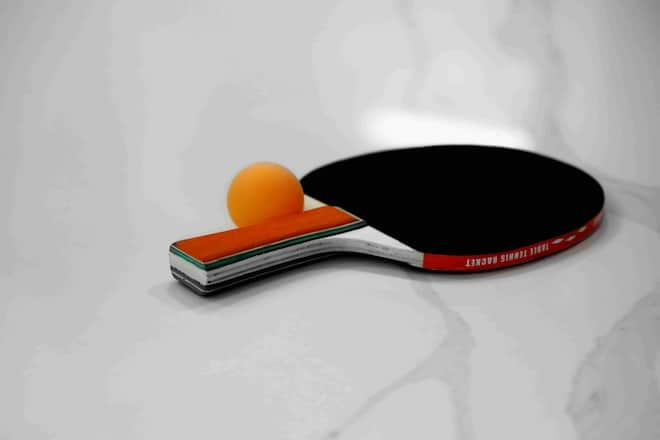Top 5 Beginner Mistakes in Table Tennis - And How to Avoid Them

Top 5 Beginner Mistakes in Table Tennis - And How to Avoid Them
Starting your table tennis journey can be exciting, but it's easy to fall into common traps. Whether you're picking up a paddle for the first time or have just started practicing, avoiding these beginner mistakes can help you level up faster. In this article, we will cover the top 5 mistakes that beginners often make and how you can fix them to improve your game. Let's get started!
1. Incorrect Grip: Understanding the Basics
One of the most common mistakes beginners make is having the wrong grip on the paddle. The way you hold your racket affects your control, power, and precision in the game. There are two primary types of grips in table tennis:
- Shakehand Grip: This is the most common grip in table tennis, similar to shaking hands with your racket. It's versatile and works well for both forehand and backhand strokes.
- Penhold Grip: This grip is common in Asian players, where the racket is held like a pen. It's favored for its close-to-the-table play but requires more wrist flexibility.
Make sure you're comfortable with your chosen grip and practice holding it correctly. An improper grip can lead to poor strokes and frustration.
2. Standing Too Close to the Table: Finding the Right Distance
Another mistake that many beginners make is standing too close to the table. While you want to be ready for fast returns, standing too close can limit your movement and make it harder to react to your opponent's shots. Aim to stand about an arm's length away from the table to allow for better reach and more reaction time.
If you're too close, you'll struggle with shots that come quickly or at odd angles. This is especially true for long or deep balls, where positioning is key. Practice finding the right balance to maintain flexibility and range of movement.
3. Overhitting: Focus on Placement Over Power
Many beginners focus too much on hitting the ball hard, which often results in mistakes such as missed shots or errors that go out of bounds. It's important to remember that table tennis is not just about power but also about precision and control.
Start by focusing on placing the ball in different parts of the table rather than trying to hit it with maximum force. As you improve, you can incorporate more power into your shots while maintaining control. By learning to place your shots strategically, you'll be more difficult for your opponent to return.
4. Ignoring Footwork: The Foundation of Good Table Tennis
Good footwork is the foundation of a solid table tennis game. Many beginners neglect their footwork, relying only on their arms to make shots. However, footwork is critical for positioning yourself correctly to hit the ball with maximum efficiency and balance.
Proper footwork allows you to reach all areas of the table, making it easier to handle various ball placements. Practice moving quickly with small steps, always staying low and ready to adjust your position for each shot. Good footwork can be a game-changer and will help you stay in control of the match.
5. No Practice Structure: The Importance of Consistent Training
One of the most important aspects of improving at table tennis is having a structured practice routine. Beginners often make the mistake of practicing without a clear focus or plan, which leads to stagnation.
To avoid this, set specific goals for each practice session. Work on different aspects of your game, such as grip, footwork, strokes, and strategy. Record your progress and continually challenge yourself with new drills. Consistency is key,by practicing regularly with purpose, you'll improve at a much faster rate.
Conclusion: Mastering the Basics
Mastering the fundamentals of table tennis takes time, but by avoiding these common beginner mistakes, you'll be able to progress more quickly. Whether it's focusing on the correct grip, improving your footwork, or developing a structured training routine, each of these steps will help you become a better player.
Remember, patience and practice are key! Keep refining your skills, and soon enough, you'll be playing like a pro.
FAQs - Frequently Asked Questions
Q1: What is the best grip for beginners in table tennis?
For beginners, the shakehand grip is generally recommended as it is easier to learn and offers great versatility for both forehand and backhand strokes.
Q2: How can I improve my footwork in table tennis?
To improve your footwork, practice moving quickly with small steps. Stay low to the ground and focus on positioning yourself properly for each shot.
Q3: Is it better to focus on power or control in the beginning?
In the beginning, focus on control and placement rather than power. Once you have mastered these, you can gradually add more power to your shots while maintaining accuracy.
Q4: How often should I practice table tennis as a beginner?
Practice at least 2-3 times a week. Consistency is key to improving quickly. Set specific goals for each session to make the most out of your practice time.